[{1 1}]
2024-08-01
3100
Catalog

Figure 1: Bluetooth Transmitter and Bluetooth Receiver
How Bluetooth transmitter function?
Understanding a Bluetooth transmitter requires knowledge of electromagnetic waves. These waves are created through the interaction between electric & magnetic fields. Charged particles generate an electric field, & electrical current flowing through conductors like wires induce a magnetic field. When these fields interact, they produce electromagnetic waves. The properties of these waves are defined by the strengths of the electric & magnetic fields. The energy level of the wave is determined by the electric field's intensity, while the magnetic field's strength affects the wave's ability to carry information, known as bandwidth.

Figure 2: Bluetooth Transmitter
Bluetooth technology operates at a lower frequency compared to other wireless communication methods like radio waves used for broadcasting audio and visual content. Although this lower frequency reduces data transmission capacity, it enhances wave scattering. Improved scattering helps Bluetooth signals navigate around obstacles, maintaining connections in complex environments. This ensures that devices like Bluetooth headsets stay connected to their sources, even when blocked by physical barriers such as walls or human bodies.
Bluetooth Transmitters for Signal Transmission
Bluetooth transmitters have antennas designed to emit modulated electromagnetic waves carrying encoded data to a receiver. Modulation alters wave properties to embed information, transmitting it across space until intercepted by a Bluetooth receiver. The receiver's antenna captures these waves and uses demodulation to extract and convert the data back into its original form, such as audio signals.
Bluetooth Transmission Process
A core technology in Bluetooth transmission is the Frequency-Hopping Spread Spectrum (FHSS). This method improves security and reliability by dynamically changing the carrier wave frequencies during transmission. Frequency hopping makes unauthorized interception difficult, reduces interference from other wireless devices, and ensures robust Bluetooth connections for secure audio streaming.
Importance of Codecs for Audio Quality
Bluetooth transmitter performance varies based on the supported codecs. Advanced codecs like aptX HD and LDAC deliver high-fidelity sound, important for audiophiles and users demanding high-quality audio. These codecs reduce latency and improve sound clarity, directly affecting user satisfaction. When selecting a Bluetooth transmitter, it is important to consider the supported codecs, as they significantly influence audio quality.
Choosing the Ideal Bluetooth Transmitter: Key Considerations
Below are some of the factors to consider to selecting right Bluetooth transmitter.
Ease of Connection
Choosing the right Bluetooth transmitter involves considering key features. The ideal transmitter connects easily without extra apps or a home network. Reliable devices provide stable connectivity. This is essential to prevent frequent disconnections & ensure smooth operation.
Low Latency
In places where audio & video must match up well—like in videos or games—delay is very important. Transmitters that use advanced technology like aptX & aptX Low Latency reduce the gap between what you see & what you hear. This is key for keeping the sound & video in sync.
High-Quality Audio Playback
Audio quality is another consideration in choosing ideal Bluetooth transmitter. A high-performing Bluetooth transmitter should maintain sound integrity without distortion. Choose devices that support robust audio codecs for lossless streaming. Features to look for include the ability to deliver clear, distortion-free sound & maintain audiophile-grade playback quality to guarantee an immersive auditory experience.
Multi-Device Pairing & Portability
For users interacting with multiple audio sources, the ability to pair with several devices simultaneously is highly beneficial. This multi-device pairing capability streamlines the user experience by eliminating frequent manual reconnections. Plus, the transmitter's physical design is needed for users on the move. A compact, lightweight transmitter is ideal for travel, combining functionality with convenience.
Connectivity Options & Range
The suitability of a Bluetooth transmitter depends on its compatibility with other devices, determined by the connectors it supports. Before purchasing, ensure the transmitter's connectors are compatible with your devices that might require an adapter. Additionally, consider the operational range, especially for use in large areas or outdoor settings. A transmitter with an extensive range maintains reliable connections over greater distances.
Applications of a Bluetooth Audio Transmitter

Figure 3: Bluetooth Transmitter Applications
Television - Bluetooth audio transmitters upgrade home entertainment systems. They are great for older TVs without Bluetooth. Connect a transmitter to your TV's audio output to use Bluetooth headphones or speakers. This gives you high-quality sound directly. It keeps the room quiet for others. Pairing is easy, just a few steps to link the transmitter with your audio device. This setup gives you clear, crisp sound, making watching movies & TV shows much better.
Car Stereos - Bluetooth transmitters update car audio systems. They connect old media systems to streaming services. Cars without Bluetooth can use a Bluetooth FM transmitter. It plugs into the car's power outlet or cigarette lighter. Users pick an empty FM channel & sync the transmitter to it, then save this setting for future use. This allows them stream music from smartphones or other Bluetooth devices. It offers non-stop access to online playlists & improves the drive with great sound & easy music control.
Connecting PCs to Wireless Headphones - For desktop & laptop users, Bluetooth audio transmitters offer an audio upgrade for gaming, music, and movies. By connecting a transmitter to a computer, users can link to wireless headphones & eliminates the clutter of wired connections. This setup is beneficial for gaming or multimedia enjoyment without disturbing others. Thus, allow freedom of movement & clear audio transmission within a reasonable range. The installation & pairing process is user-friendly. It involves basic steps to ensure effective communication between the transmitter & headphones. Users must stay within the transmitter’s operational range to maintain optimal audio quality & prevent disconnections.
Benefits and Drawbacks of Bluetooth Transmitters
Bluetooth transmitters are used in modern wireless audio setups to improve user convenience & mobility. Here, we explore their advantages & potential limitations of their impact on everyday audio interactions.
Advantages of Bluetooth Transmitters
Bluetooth transmitters offer numerous benefits for contemporary users, focusing on convenience & mobility.
Elimination of Wires - They reduce clutter & simplify the audio setup process by enabling wireless connections between audio sources like TVs, stereos, & computers, & output devices like speakers or headphones. This creates a cleaner, more organized living or working environment.
Enhanced Mobility - Without physical cables, users can move freely. It is an advantage for multitasking across different rooms without interrupting their audio experience
Consistent Connection Range - Most Bluetooth transmitters maintain solid connections over distances up to 30 feet or more, supporting a wide range of movement while ensuring consistent audio quality without drops or interruptions.
Disadvantages of Bluetooth Transmitters
Despite their advantages, Bluetooth transmitters have some drawbacks that can affect user experience.
Connection Stability - The Bluetooth connection, though generally reliable, can be disrupted. These disruptions can manifest as dropped connections or interference from other devices on similar frequencies. It will lead to inconsistent audio playback.
Compatibility Issues - Not all transmitters work seamlessly with every type of device. That potentially limit their usefulness in diverse tech environments.
Latency in Audio Transmission - Latency can noticeable when precise audio-visual synchronization is necessary. This can disrupt activities like watching movies or playing video games. That could result in a disjointed & frustrating experience.
How Does a Bluetooth Receiver Work?
Bluetooth receivers are components in modern audio systems, enabling the integration of Bluetooth-enabled devices with systems that lack native Bluetooth support. It simplifies audio management & increases user experience. Because it eliminates the need for wired connections.

Figure 4: Bluetooth Receiver
How a Bluetooth Receiver Enhances Audio Connectivity
Bluetooth receivers improve audio connectivity by capturing signals from Bluetooth-enabled transmitters like smartphones or music players. Using a specialized Bluetooth antenna, these receivers pick up & process the transmitted signals. The audio signal is then relayed to an audio system that lacks inherent Bluetooth capabilities. This can be done through various connections such as USB ports, 3.5mm auxiliary inputs, or RCA jacks. This capability allows users to integrate modern streaming technologies with traditional audio systems. Thus provide a cost-effective upgrade without needing to replace existing equipment. Users can connect their modern devices to older audio systems, bridging the gap between new & old technologies. That guarantee broad compatibility across different audio setups.
Bluetooth Receivers Across Different Devices
Bluetooth receivers are used in a wide range of applications. These devices are not limited to home audio systems but are also effective in vehicles & with portable speakers. For example, Bluetooth receivers can retrofit older car stereos. Enabling older car stereos to stream music directly from users’ smartphones. This feature makes Bluetooth receivers important accessories for enhancing the functionality of both modern & legacy audio systems. They extend the life & usability of non-Bluetooth enabled audio devices. They provide a cost-effective solution for audio system upgrades.
Pros and Cons of Using Bluetooth Receivers
While Bluetooth receivers offer advantages such as convenience, enhanced mobility, & reduced cable clutter, they also have drawbacks that users must consider. On the positive side, these devices facilitate cleaner & more flexible audio setups. That allow users to stream audio without the limitations of wires. This freedom is valuable in multi-room setups or during activities requiring mobility. However, challenges include intermittent connectivity or reduced audio quality due to signal interference. Plus, the operational range & compatibility with certain devices can vary. That will potentially limit the usefulness of some receivers. Latency is another concern, especially in setups requiring synchronization between audio & visual content, such as home theaters. This can result in a suboptimal user experience in timing-sensitive applications.
Bluetooth Transmitters vs. Receivers: Which One is Right for You?
Navigating the world of Bluetooth audio devices requires understanding the distinct functions of Bluetooth transmitters & receivers. Both enhance audio connectivity but serve opposite roles. Your choice should be based on your existing audio equipment & intended use.

Figure 5: Bluetooth Transmitters and Receiver: Which Is Best for You?
Bluetooth transmitter adds Bluetooth functionality to non-Bluetooth devices. This is necessary for streaming high-definition audio from traditional sources like televisions or stereo systems to Bluetooth-enabled devices such as wireless speakers & headphones. For instance, if your TV lacks Bluetooth but you want to use wireless headphones for private viewing, a Bluetooth transmitter can be useful. It sends the audio signal to your headphones & improve your media experience without needing expensive upgrades to your current equipment.
A Bluetooth receiver converts analog or digital audio systems into Bluetooth-compatible units. It connects to your stereo system & receives audio signals from Bluetooth-enabled sources like smartphones or tablets. If you have an older stereo system with excellent sound quality that you want to preserve, a Bluetooth receiver modernizes it without compromising its original character. This allows you to stream music from apps like Spotify or Apple Music through a system previously limited to tapes or vinyl records. Many Bluetooth receivers also handle phone calls, routing them through your audio system or connected headset & increasing the utility of your setup.
Choosing between a Bluetooth transmitter & a receiver depends on your specific needs & available devices. If you need to send audio from a non-Bluetooth device to a Bluetooth-enabled speaker or headphones, a Bluetooth transmitter is the right choice. Conversely, if you want to receive audio from a Bluetooth device & play it through a non-Bluetooth speaker system, a Bluetooth receiver is more suitable. Each device offers unique advantages that can improve your audio experience, depending on how they integrate with your current equipment & preferences.
Comparing Transmitters and Receivers
To make an informed decision, consider these aspects:
Range - Both devices typically support a range of 30-33 feet, adequate for most home environments. For larger spaces, models maintaining connections up to 100 feet offer increased flexibility & usability.
Battery Life - For portable setups, battery life is significant. Typical battery life ranges from 8 to 12 hours, but it can vary based on the model & usage. Devices with extended battery life enhance convenience, especially in mobile scenarios.
Compatibility - Ensure the device is compatible with your specific audio equipment & other devices. Check support for various operating systems & ensure it can connect with all intended audio outputs & inputs. Verifying these details prevents frustration & limited usability.
Audio Quality - The quality of audio transmission varies depending on the design & technology used. Devices supporting high-definition audio codecs & built with high-quality components provide the best audio experience. Look for transmitters and receivers that support the latest audio technologies for superior sound quality.
Cost - Consider the cost relative to features & performance. Higher-end models usually offer better audio quality & fewer connectivity issues but can be more expensive. Balance your budget with the features you need to find the best value for your investment.
Conclusion
Getting to know Bluetooth transmitters & receivers is important if you want to set up your audio equipment without wires. This article has looked at how these devices work, what makes them different, & how to pick the right one for your needs. Whether you need a transmitter to send audio from a device that doesn't have Bluetooth, or a receiver to pick up audio & play it through a system that's not Bluetooth-enabled, the choice depends on what you have and what you need. By thinking about things like how far the signal needs to go, how long the battery should last, whether it will work with your other devices, how good the sound quality is, & how much it costs, you can choose the best option for your setup. This will help you get the best sound experience possible, in a way that fits your life & budget.
Frequently Asked Questions [FAQ]
1. Can I use a Bluetooth transmitter and receiver at the same time?
Yes, you can use both a transmitter & receiver simultaneously to link devices that lack Bluetooth.
2. How to pairs my Bluetooth transmitter or receiver with my device?
To pair your device:
Turn on your Bluetooth transmitter or receiver;
Activate Bluetooth on your device (such as a smartphone);
Search for & select your transmitter or receiver from the list of available devices;
Connect, & if prompted, enter the PIN provided in the device's manual.
3. How far can a Bluetooth transmitter or receiver send or receive signals?
These devices typically work within a range of up to 30 feet. However, walls & other electronic devices can affect this distance.
4. Do Bluetooth transmitters and receivers need to be the same brand to work together?
No, Bluetooth devices are generally compatible across different brands.
5. Can Bluetooth transmitters cause interference with other wireless devices?
Bluetooth usually does not interfere with other wireless devices as it uses specific frequencies. If interference occurs, try repositioning the devices or adjusting their settings.
6. Are there any security concerns with using Bluetooth transmitters and receivers?
There are potential security risks with any wireless technology. To enhance security, use updated devices, enable encryption, & turn off the devices when not in use.
 FAATATAU IA TATOU
Tagata faamalieina i taimi uma.Agaalofa ma le talitonuina ma fiafia masani.
FAATATAU IA TATOU
Tagata faamalieina i taimi uma.Agaalofa ma le talitonuina ma fiafia masani.
suʻega suʻega.O oloa aupito pito sili ona maualuga tau ma le tautua sili o lo tatou tautinoga faavavau.
![[{1 1}]](/upfile/blog/small_2024080211481894281.jpg) [{1 1}]
[{1 1}]
2024-08-02
![[{1 1}]](/upfile/blog/small_2024080114574662371.png) [{1 1}]
[{1 1}]
2024-08-01
VAI VAEGA Numera
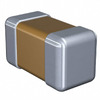 C0603C0G1E100D030BA
C0603C0G1E100D030BA 0805YC104KAT2A
0805YC104KAT2A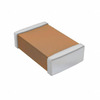 CL32C103GBFNNNE
CL32C103GBFNNNE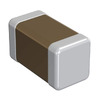 GJM0225C1E6R4CB01L
GJM0225C1E6R4CB01L 06035C472MAT2A
06035C472MAT2A 08055U1R8BAT2A
08055U1R8BAT2A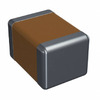 1812AC330KAT9A
1812AC330KAT9A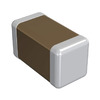 GRM1555C1E4R8CZ01D
GRM1555C1E4R8CZ01D GRM2166T1H221JD15D
GRM2166T1H221JD15D T495D226K020AHE225
T495D226K020AHE225
- SI2318DS-T1-GE3
- 744775147
- S9S12VR32F0MLC
- P1010NSN5HHA
- DSPIC33FJ32MC202-I/SO
- VI-2T0-IV
- 1DI300ZN-120
- BSM25GD60DLC
- MC34074APG
- LP8552TLX-E04/NOPB
- TMS320F28377DZWTS
- T491B685K016AT4280
- UC37132D
- 0460-202-2031
- THS4031IDR
- DDC112YK/250
- 74VCX132M
- DS87C520QNL
- BC817-25W
- HAT2031T
- HYB18M512160AF-7.5
- IDT70V06L20PFI
- K4T51163QE-ZCE6000
- M34282M1-F29GP
- M38039MC-279FP
- PIC16LC54C04I/SO
- S1A0903X01-QO
- SC29432VZO
- SF-2682VB1-SCC
- STMP3638
- TEA5990UK1S14
- CH7304A-T
- JANTX2N4859A
- S29GL128M90FAIR2
- SVC381-TL-E
- UPD91020GF-3B9
- S9S08AW16AE1MLDR
- AT49SN25616-70CI
- CL-SH3374-EC-A2